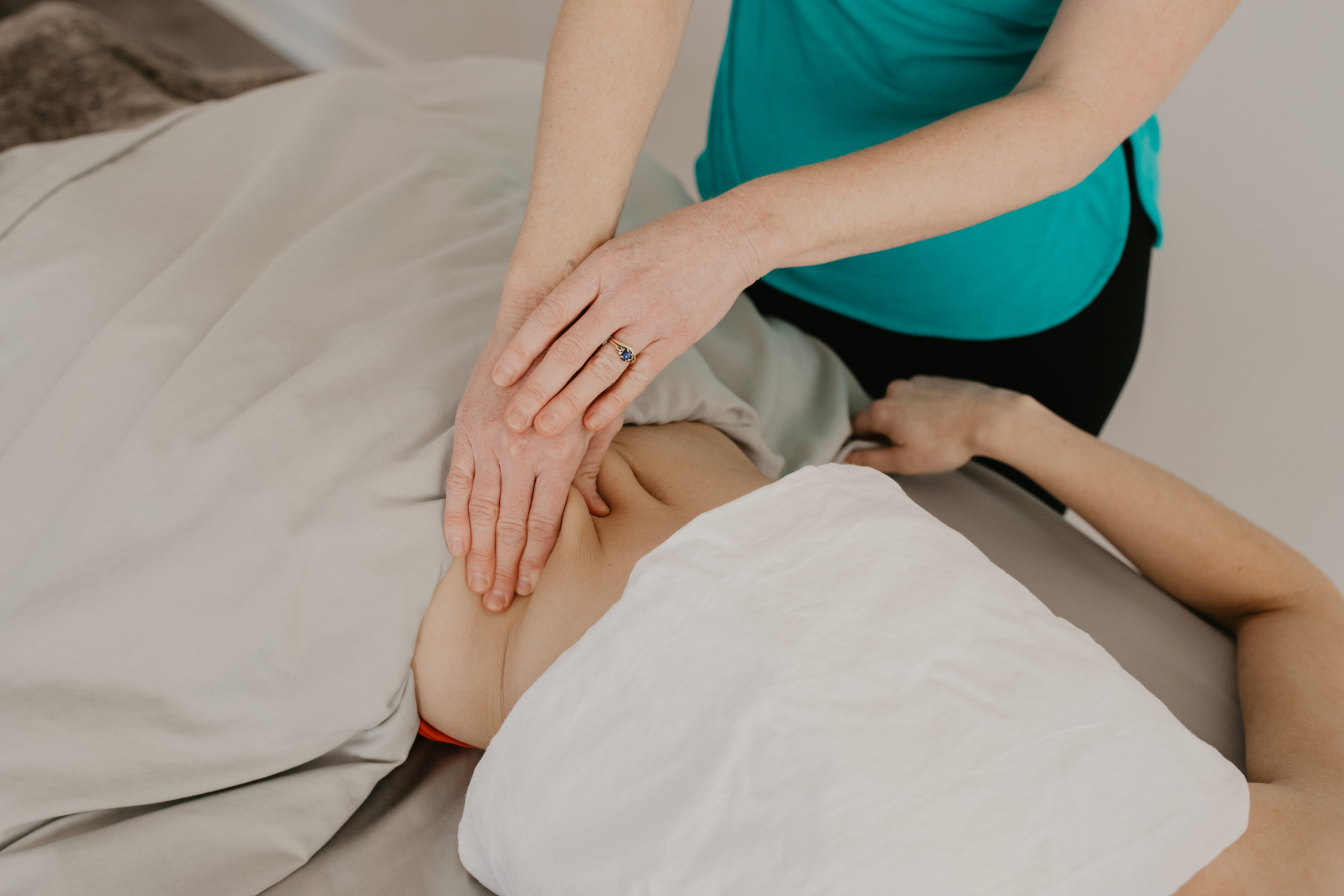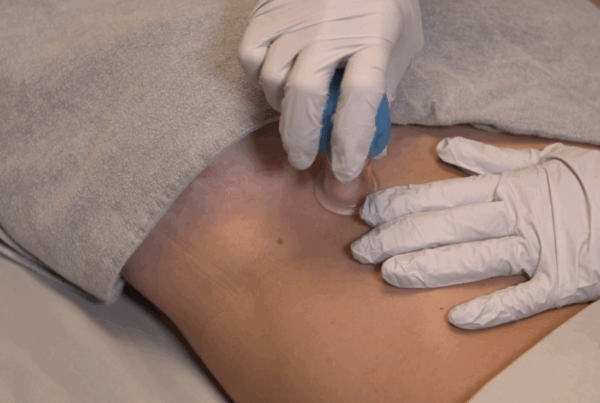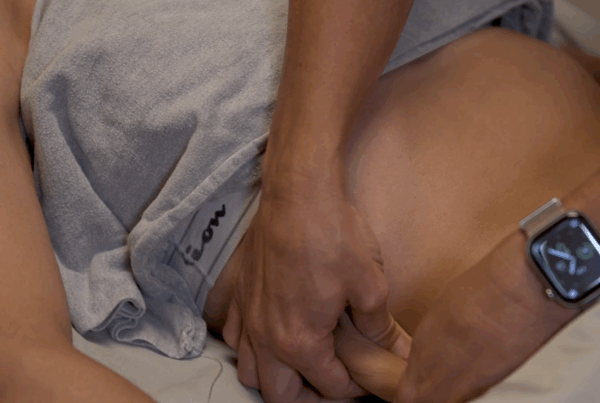After liposuction, especially after a Brazilian Butt Lift (BBL), fluid drainage is normal and expected. Many patients experience it during the first several days of recovery, often while staying in a post-op recovery house.
Unfortunately, there’s still confusion about what kind of drainage is safe, who should be performing it, and when.
I want to clear up the difference between surgeon-directed incisional drainage and professional lymphatic drainage. The goal is simple: keep your healing on track, protect your results, and make sure every step follows proper safety standards.
Understanding Lymphatic Drainage vs. Incisional Drainage
Let’s clear up the wording first, as it will help you understand this article much better.
With manual lymphatic drainage, nothing drains or exits through the skin or an incision. The technique shifts lymph fluid internally toward lymph nodes, then into your bloodstream. From there, your kidneys and liver process and excrete waste in the usual ways. That is the “drainage” part of lymphatic drainage.
Incisional drainage is different. That term refers to fluid that exits a surgical site. It can be managed with surgical drains, absorbent dressings, or by a clinician expressing fluid from an incision. You may see fluid on bandages. You may measure output. That is true external drainage.
What Is Tumescent Liposuction?
Most liposuction procedures today use the tumescent technique. During surgery, the surgeon infuses large amounts of sterile saline mixed with lidocaine (for numbing) and epinephrine (to reduce bleeding) directly into the fat tissue. This makes the fat easier to remove, minimizes pain, and helps control bleeding.
While this technique is effective, it leaves extra fluid in the body that must be managed after surgery. How this fluid is cleared is a critical part of your healing and your final results.
Understanding Incisional (Open) Drainage
Some surgeons choose to leave tiny incision points, often called “adits”, partially open so the tumescent and serous fluids can drain out naturally. Others may place small drains, such as Jackson-Pratt (JP) or Penrose drains, to collect the fluid.
The typical drainage period lasts 2–7 days, and surgeons usually remove drains once fluid output drops below about 30 ml a day. This method can help prevent fluid buildup (seromas), reduce swelling, and allow the skin to adhere more smoothly to underlying tissue when combined with proper compression.
Incisional drainage is always planned and directed by your surgeon. It’s done under sterile surgical conditions, with specific removal timelines and instructions.
The Problem with Recovery-House “Squeeze” Methods
One of the more concerning trends I’ve seen is the use of “squeeze massages” by unlicensed providers in some recovery houses. This involves pressing directly on open incisions to force fluid out without medical supervision, sterile protocols, or proper training.
“The difference between what they do and what Via Medical Massage does is this: We use the body’s natural lymphatic system to drain things out, which is very light, versus just squeezing fluids out,” Becky Impens, LMT, CLT, CNA, CCST at Via Medical Massage, said. “Aggressive massage or incisional drainage can actually increase inflammation by triggering your body’s trauma response. You want a gentle massage that’s going to stimulate your body’s parasympathetic system to help calm everything down and help just move that fluid out.”
I’ve heard too many stories of patients developing fibrosis (lumpy scar tissue), fainting from pain or blood pressure drops, and even increasing their infection risk because of these methods. Any technique that bypasses infection control and clinical oversight is not safe for post-op care.
What Is True Lymphatic Drainage (MLD)?
Manual Lymphatic Drainage, or MLD, is a completely different approach. It’s a gentle, hands-on technique that uses light, superficial strokes to encourage lymph fluid to move toward the body’s central drainage points. It supports the immune system and helps reduce swelling without touching open wounds.
The results are measured by signs like increased thirst and urination, not by watching fluid pour out of an incision. MLD works internally, moving excess fluid into the lymphatic system for safe removal by the body.
Why MLD at Via Medical Massage Is Safe and Science-Driven
At Via Medical Massage, we never press on open incisions or try to force drainage. All MLD sessions are strictly internal and follow evidence-based post-op protocols.
We work with many providers across Omaha and Lincoln to tailor your care and ensure we’re performing work that is beneficial and pain-relieving.
If your surgeon has you in an active incisional drainage phase, we’ll wait until you’re cleared before starting lymphatic drainage. That’s because draining fluid through surgical openings should only be done under sterile, surgeon-directed conditions.
At the same time, incision site leakage isn’t necessarily a dealbreaker for getting a manual lymphatic drainage massage, either. We will make sure all techniques are done away from the incision drainage areas while still providing a leak pad on the massage table and wearing protective gloves during MLD.
Incisional Drainage vs. Lymphatic Drainage Comparison Table
| Feature | Incisional Drainage (Surgeon-Directed) | MLD at Via Medical Massage |
| Purpose | Remove tumescent fluid via open wound | Move interstitial fluid internally |
| Who performs | Surgeon/OR team | Licensed therapist (non-invasive) |
| Infection risk | Managed in surgical setting | Very low |
| Fluid removal pathway | External via incision/drain | Internal via lymphatic system |
| Safety certifications | Medical setting + sterile technique | Clinical protocols + consent |
| Ideal for | Acute post-op fluid management | Post-op swelling & recovery support |
FAQ Incisional Drainage vs Lymphatic Drainage
1. I stayed in a recovery house and had incisional drainage with painful, aggressive massage. Would it still be beneficial to come to Via Medical Massage?
Yes. Even if you’ve experienced aggressive, painful treatments elsewhere, gentle manual lymphatic drainage (MLD) can still help your body recover. MLD is designed to reduce swelling, improve comfort, and support natural healing without forceful squeezing. Many clients feel immediate relief when they experience our safe and medically informed approach.
2. I had a really bad experience at a recovery house, and now I’m nervous to get post-op lymphatic drainage. Can you help?
We understand — many clients come to us feeling anxious after painful or unsafe treatments elsewhere. Our approach is gentle, medically based, and always at your pace. Most people feel both relief and reassurance within the very first session.
3. My incisions have closed, and I think I have a seroma. Can manual lymphatic drainage still help me?
Yes. Once your incisions are closed, MLD is very effective at helping your body reabsorb fluid and reduce the size of seromas. While seromas sometimes need to be drained by your surgeon, lymphatic drainage often works alongside your surgeon’s recommendations to improve healing and comfort.
4. I’m getting my surgery out of state. Can I plan ahead and pre-book my lymphatic drainage sessions with you?
Absolutely. Many of our clients travel for surgery and schedule their post-op sessions before their procedure. This ensures you have a plan in place for safe, gentle recovery care as soon as you return home.
5. I’m still having a small amount of leakage from my incisions. Can I come in for a massage session?
Yes. As long as you don’t have signs of infection (such as redness, fever, or foul-smelling drainage), it’s safe to receive lymphatic drainage. Our therapists use universal precautions, fresh linens, and sterile draping to protect you and keep the treatment safe.
6. How do you protect me from infection after liposuction?
Your safety is our top priority. We follow strict hygiene protocols, including clean linens for every client, medical-grade disinfectants, hand hygiene, and gloves when appropriate. Our therapists are clinically trained to recognize warning signs of infection and will refer you back to your surgeon if needed.
7. I saw on Instagram that “squeeze massage” is the only way to get the look I want. Is that true?
No. Aggressive “squeeze” massage can actually increase inflammation, worsen swelling, and damage delicate healing tissue. Your surgeon likely left incisions open to allow fluid to drain naturally. Gentle lymphatic drainage supports your body’s recovery far more effectively — and research confirms its role in reducing swelling and improving healing outcomes.
8. I also saw that I need body contouring techniques to look “snatched.” Are you saying I just need something gentler?
Yes. The idea that only aggressive contouring creates results is a myth. True contouring happens when swelling decreases, tissues heal properly, and scar tissue forms smoothly — all of which are supported by gentle, targeted lymphatic drainage. It’s a powerful medical technique, not a spa treatment, and it sets the foundation for your best long-term outcome.
9. How soon after surgery should I start lymphatic drainage?
Most surgeons recommend starting within a few days of your procedure, but it depends on your individual case. We work with your surgeon’s instructions and customize the timing to your healing. Starting early (when safe) can dramatically reduce swelling and discomfort.
10. What if I develop fibrosis or lumps under my skin? Can you help?
Yes. Fibrosis (firm, lumpy areas under the skin) is a common post-liposuction concern. Manual lymphatic drainage combined with gentle scar tissue techniques can reduce the density of these areas and help smooth your results over time.
Final Takeaway
Your healing after liposuction is too important to risk with untrained, unsafe methods. At Via Medical Massage, our role is to support your recovery with gentle, science-backed MLD that works with your body.
If you’re still in an active incisional drainage phase, we’ll work with your surgeon to ensure the right timing and approach. If you’re cleared, we’re here to help you reduce swelling, improve comfort, and get back to feeling your best.
Please reach out to us to ask any additional questions. If you’re ready to book an appointment, you can do that online. Via Medical Massage has three convenient locations, two in Lincoln, one in West Omaha (Elkhorn).





